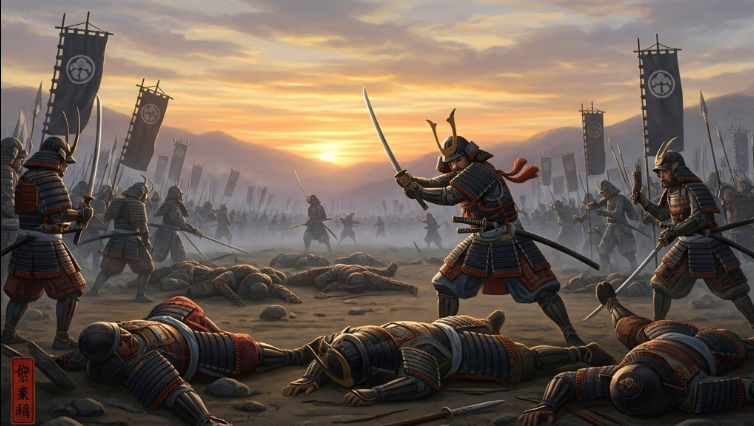Exploring the History, Training, and Cultural Legacy of Japan’s Warrior Class
The image of the samurai, clad in polished armor and wielding a razor-sharp katana, is one of the most enduring symbols of ancient Japan. These elite warriors were far more than swordsmen—they were statesmen, scholars, and custodians of a unique ethical code that shaped Japanese culture for centuries.
From their rise in the Heian period to their eventual decline during the Meiji Restoration, the samurai played a central role in the political, military, and moral landscape of Japan. Let’s delve into their fascinating world—how they lived, fought, and left a lasting legacy.
Origins and Historical Rise of the Samurai
The term samurai (侍), meaning "those who serve," first emerged during the Heian period (794–1185). Initially, these warriors were retainers for powerful noble families, protecting their landholdings and enforcing local rule.
However, the collapse of central imperial power gave rise to the bushi class—regional military clans who filled the power vacuum. By the Kamakura period (1185–1333), the samurai had become Japan’s ruling elite, following the establishment of the first shogunate under Minamoto no Yoritomo.
Over the centuries, they dominated feudal Japan under successive military governments:
Ashikaga Shogunate (1336–1573)
Tokugawa Shogunate (1603–1868)
During these eras, the samurai class not only fought wars but administered provinces, collected taxes, and served as a moral compass for the nation.
Samurai Training and Way of Life
Training to become a samurai began in early childhood. Young boys were taught:
Archery (kyūdō)
Swordsmanship (kenjutsu)
Horsemanship
Martial arts (like jujutsu)
But physical prowess was only half the equation. Education in literature, philosophy, and calligraphy was essential. A cultured warrior was idealized, someone who could quote Confucius as easily as he could swing a blade.
At the heart of their lives was Bushidō, the “Way of the Warrior.” This unwritten code emphasized:
Loyalty to one’s lord (daimyō)
Personal honor and discipline
Courage in the face of death
Self-sacrifice for the greater good
This code echoed both Zen Buddhist detachment and Confucian ethics, creating a complex moral system that held samurai accountable both on and off the battlefield.
Weapons and Armor
The samurai’s most iconic weapon was the katana, a curved sword known for its sharpness, elegance, and symbolic power. However, it was far from the only tool in their arsenal:
Yumi (longbow) – the primary weapon during early samurai warfare
Tantō and wakizashi – smaller blades used for close combat or ritual suicide (seppuku)
Polearms like the naginata and yari (spear)
Their armor (known as ō-yoroi or dō-maru) was crafted from lacquered leather and metal plates, designed to protect while still allowing for mobility on horseback.
Cultural and Political Significance
Beyond the battlefield, the samurai were pillars of cultural life. During periods of peace, especially in the Edo period, they became bureaucrats, poets, tea masters, and artists. Their patronage helped refine traditional Japanese arts, from Noh theater to ink painting and Zen gardening.
The samurai also played a key role in maintaining order. As part of the bakufu (military government), they upheld laws and enforced loyalty to the shogunate. Their strict hierarchy and honor system helped stabilize society during centuries of internal and external threats.
Decline and Legacy
By the mid-19th century, the samurai’s role was becoming increasingly symbolic. The arrival of Western powers and modernization pressures during the Meiji Restoration (1868) led to the abolition of the samurai class. Samurai lost their stipends, and the wearing of swords was banned.
Some resisted this change—most famously during the Satsuma Rebellion (1877), led by Saigō Takamori, often called “the last true samurai.” Ultimately, modernization prevailed, but the samurai spirit endured.
Enduring Influence
The samurai legacy lives on in many forms:
Martial arts like kendo and judo are rooted in samurai techniques.
Modern Japanese ethics, especially in business and government, often echo bushidō values.
In popular culture—anime, cinema, and literature—samurai remain iconic figures symbolizing discipline, honor, and resilience.
Films like Akira Kurosawa’s "Seven Samurai", or characters like Kenshin Himura and Jin Sakai, continue to bring their stories to life for global audiences.
Conclusion
The samurai were more than warriors—they were the soul of feudal Japan, embodying a balance of ferocity and refinement. Their code shaped centuries of thought, their discipline inspired generations, and their memory continues to captivate the world.
As Japan evolved, the samurai did not vanish—they were transformed into symbols of integrity, dedication, and spiritual strength.







